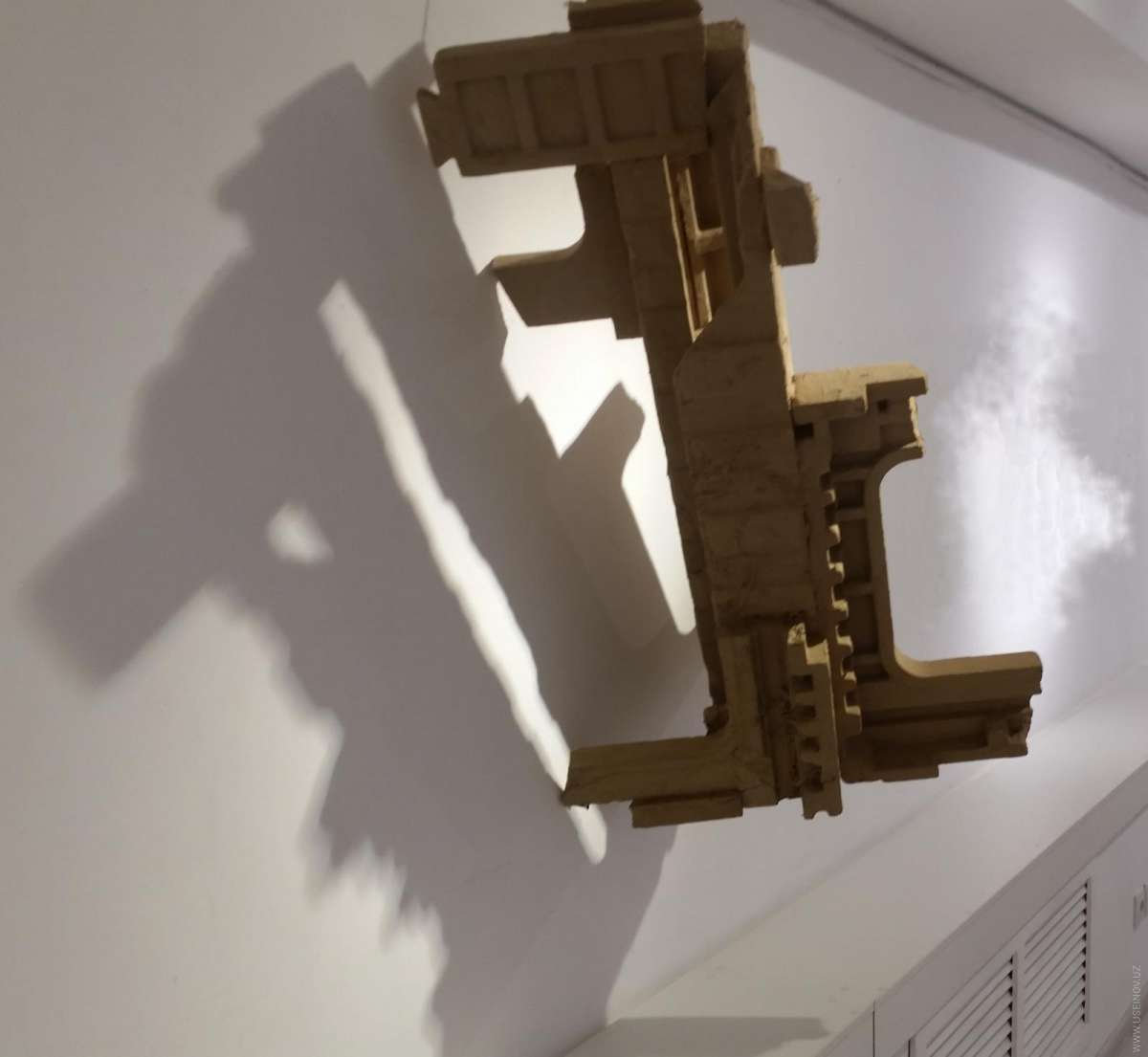As a rule, we throw out the used packaging foam plastic into the trash, yet its favorable technical properties, such as lightness, pliability, watertightness, have generated positive interest in using it in the project. Due to the block configuration of one-time usability, the foam plastic bears the imprint of the other things design as a model of impeccable aesthetics of exact proportions that soothsays the backside profile of the foam by an abstract revelation of the intervention of uncluttered forms.
In this outline, the prototype of the future object is at the point of intuitive understanding that it will be a block puzzle of architectural ruins in the retrograde amnesia of the up-to-the-minute moment, where the current context of reality, like a construction boom werewolf together with the global pandemic, are holding us on the hook beyond our consciousness. So, the point of issue is the transformation of foam plastic into the archetype of construction ruins that, by the way, does not contradict the foundations of ideological aberrations in the sphere of paper architecture. In the process of creating the project, the first step was focused on solving the problem of accumulating packaging blocks in such a way as to identify the structural and plastic features of the form. The mechanism of intellectual and emotional response got actuated in determining the conceptual and poetic spectrum of all subsequent ideas via this act of activity. Then, at the second stage, it was necessary to free the surface of the foam plastic from the synthetic whiteness color and to add an earthy shade of straw ochre to it by treating the surface with a double clay coating. At this point of work, it became obvious that the object should have an anti-sculptural reading ruling out the routine process of academic modeling. Due to the construction nature of block elements, a wandering entrancement of fruitful search in the materialization of unusual and exquisite constructional solutions arises here. In a point of fact, this artistic erection of small forms should ultimately resemble a construction site of some abandoned object that is ready to take over the cladding in the cheegrass technique. Although it is not unlikely that in our eyes this totem camp pretended to be the pathos of the May Day machine of the Union of Soviet Socialist Republics times which banner uniform had faded to the color of burnt clay. Returning to the position of textile design, at the third stage, silk and acrylic threads wound around thin wooden sticks are glued onto a primed base to match the size of clay templates. Focusing the algorithm of ideological clarity, the project, like a ceremonial discourse in the depths of uselessness itself, assists its own appearance with the sign of interface navigation in concealment of a new refuge for texts and dust. Further, marking the local topos of a closed space, we see the visuality of an oriental ornament with a swastika on the angular ledge of the object. Clay, like bound dust, keeps awake in its sleep giving the tactile content of its figurativeness to the illusion of meaning. But on another cinder-block spread, a printed relief of the word "Kimsan" opens like a roadblock of our moment and it is replicated again in the niche only in a different combination "Sen u'zing kim san".
And in another ossuary, the text itself written by Sasha Kuprin contains other concealment "Under the dust of whispers sick mirrors extinguished". In fact, the text occurrence in the ossuary is verbal dust, and dust is a text without content. Recently, Shamshad Abdullayev wrote to me in regard to the project name "The Ossuary for Texts and Dust" that "there is a feeling of the claustrophobic stratification – indeed, it is an ossuary for small earthly things, and there is a lot of space for prolonged reading over the furrowed and lumpy voids without bones or, as Beckett would say, without the echo of bones".











